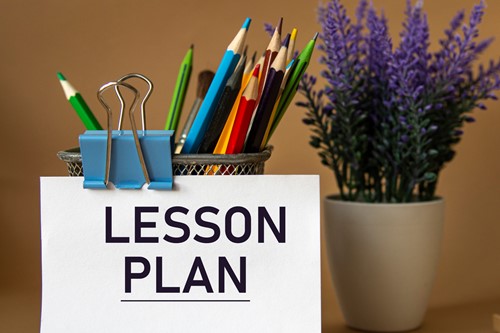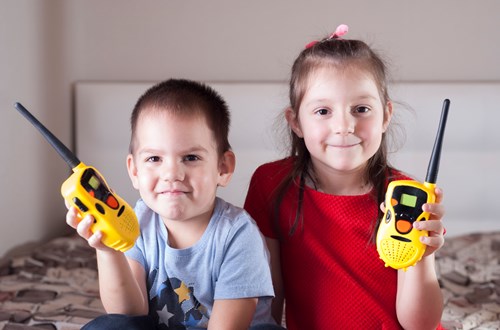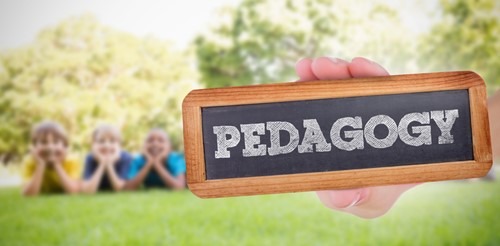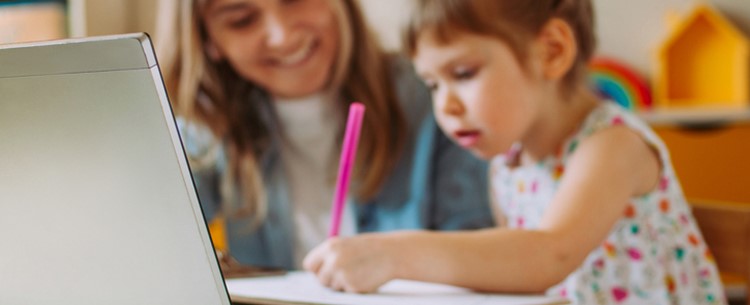By Michael Hilkemeijer
From Download to Transformation: 10 Powerful ICT Activities for Kindergarten That Drive Real Learning
When Elena, a passionate kindergarten teacher from rural Queensland, joined the ICT in Education Teacher Academy, she was looking for fresh technology activities for 3–5 year olds. She had access to a few tablets and an old classroom computer—but no clear roadmap on how to use technology in the kindergarten classroom. Most online ideas were scattered and lacked connection to her curriculum goals. That’s when she found a done-for-you lesson in the membership library titled Learning About Computers.
At the time, Elena wasn’t confident in digital integration. Her goal was simple: introduce her children to basic computer parts in a fun and developmentally appropriate way. What she didn’t expect was that this one download would spark an ongoing transformation—not just in how she taught ICT, but in how she grew professionally through a structured journey.
This article showcases 10 ICT activities for kindergarten—available exclusively to members—and explains how each activity can become a meaningful professional learning milestone through the Membership Learning Journey and the membershipworkbook.

10 ICT Activities for Kindergarten That Spark Real Progress
These classroom-tested activities are available to all ICT in Education Teacher Academy members. Each one includes detailed lesson plans, digital integration strategies, and links to the EYLF. When paired with the membership workbook, these activities guide you toward deeper, more confident technology use.
1. Learning About Computers
Children explore parts of a computer, use the mouse and keyboard, and complete creative tasks like digital drawing.
As a Member: Align the activity with EYLF 4.4 and 3.2 using the Planning Template and observe digital skill development using the Observation Guide.
2. Outdoor Digital Storytelling
Children capture nature sounds and create their own digital stories using apps like Book Creator.
As a Member: Extend language development through oral storytelling prompts and reflect on multimodal expression using the workbookOutdoor digital storyte….
3. QR Code Nature Hunt
Children use tablets to scan QR codes outdoors, uncovering facts about nature.
As a Member: Create your own QR clues and share them in the community. Use reflection prompts to guide post-hunt storytellingQR code nature hunt.
4. Drawing with Programmable Toys
Children attach markers to Bee Bots and create artwork through coding.
As a Member: Track sequencing, prediction, and creativity using the workbook’s Higher Order Thinking tableProblem solving activit….
5. Bee Bot School Bus Role Play
Children code Bee Bots to pick up passengers around a block-built city.
As a Member: Plan modifications with the Lesson Planning Template and reflect on outcomes through the Digital Reflection LogPreschool lesson plan B….
6. Sorting Animals Using Digital Tools
Children use digital images to sort pets and learn about classification.
As a Member: Scaffold ICT confidence using the workbook’s ICT Differentiation strategy and capture reflections in the Learning JournalSorting animals.
7. Augmented Reality (AR) Nature Exploration
Children use AR apps to identify plants and insects, recording their findings in a digital journal.
As a Member: Use the workbook to track how students engage with AR tools and scaffold documentation across different age groupsAugmented Reality outdo….
8. Coding with Nature and Programmable Toys
Children guide robots through outdoor coding challenges, learning direction and logic.
As a Member: Reflect on trial-and-error experiences using the Reflection Prompts and scaffold progress with ICT Differentiation tiersCoding with nature and ….
9. Adventure Games and Digital Simulations
Children explore non-violent, educational games that develop thinking and literacy skills.
As a Member: Use the ICT Levels of Differentiation to guide support, and evaluate game engagement using the Observation TableProblem solving activit….
10. Taking Apart a Computer
Children explore the inside of a non-working computer, learning how it works and what each part does.
As a Member: Use the Communication Log to document children's thoughts and scaffold their reflections using workbook promptsProblem solving activit….

What Is ICT in Early Childhood Education?
What is ICT in early childhood education?
It’s not just about using devices—it’s about how digital tools are integrated meaningfully to support communication, creativity, problem-solving, digital literacy, and early foundational skills.
In the ICT in Education Teacher Academy, ICT isn’t a standalone subject. It’s woven through lesson plans and hands-on experiences that align with the Early Years Learning Framework (EYLF). These activities help children explore, create, communicate, and reflect using developmentally appropriate technology.
Here's a table showing key ICT tools and how they connect to specific activities within the membership:
| ICT Tool | How It’s Used in Membership Activities |
|---|---|
| Laptop/Desktop Computers | Used in Learning About Computers, Sorting Animals, and Adventure Games for digital drawing, typing, and exploration. |
| Tablets/Smartphones | Used in Outdoor Digital Storytelling, QR Code Nature Hunt, Digital Photography Walk, and AR Nature Exploration. |
| Programmable Toys (e.g., Bee Bot) | Central to Drawing with Programmable Toys, Bee Bot School Bus, Coding with Nature, and Abstract Art with Bee Bots. |
| Drawing & Painting Software | Paint 3D and similar apps used in 2D Shape Activities (e.g., Find the Shapes, Roll & Trace, Create Real-World Images). |
| Word Processors (e.g., MS Word) | Used in Sorting Animals for creating tables and classifying content. Also supports basic text formatting and digital literacy. |
| Spreadsheets (e.g., Excel) | Used in member extension activities to classify, sort, and visually represent data (e.g., animal groups or pattern observations). |
| Presentation Software (e.g., PowerPoint) | Used to create digital slideshows in Digital Nature Collages and Photo Discussions. |
| Audio Recording Apps | Used in Outdoor Digital Storytelling, AR Reflections, and Digital Sound Safari to support oral language development. |
| AR (Augmented Reality) Apps | Seek, AR Makr, and QuiverVision used in AR Nature Exploration to identify and explore the natural world. |
| Interactive Whiteboard (IWB) | Used to model sorting tasks, digital drawings, and interactive shape activities in front of the class. |
As a member, you don’t just get access to these tools—you gain:
-
Done-for-you lesson plans with step-by-step instructions for using each tool meaningfully.
-
The Workbook Planning Templates to align tool use with EYLF outcomes and professional goals.
-
The Wisdom Tool, where you can ask questions like, “What activity can I do with Paint 3D and 4-year-olds?”
-
A community of educators who share real examples of how they’ve adapted activities based on the tools they have available.
This isn’t about screen time—it’s about purposeful, curriculum-aligned technology use that supports children’s learning and your growth as a digital educator.

Elena’s Journey: From Basic Use to Confident Digital Teaching
Elena started with one activity—Learning About Computers. After implementing it in her classroom, she noticed a spark. Her students were engaged, confident, and asking thoughtful questions about how computers worked. But what changed everything for Elena was the membership workbook.
Here’s how she used it to grow:
-
Planning for Success:
She used the workbook's Planning Template to align the activity to EYLF 3.2 and 5.4. It helped her clarify learning outcomes and identify digital skills she wanted to nurture. -
Differentiation and Observation:
Using the ICT Levels of Differentiation page, Elena grouped her students based on their comfort with using the mouse and keyboard. The Observation Guide allowed her to track fine motor and digital skills with ease. -
Community Support:
Unsure how to extend the activity, Elena posted a question in the community forum. Within hours, members suggested combining the activity with the Digital Nature Walk and even recommended printable keyboard mats for tactile learners. -
Reflecting and Documenting Progress:
She used the workbook’s Critical Reflection Prompts to think about how the activity supported curiosity and persistence. Then, she documented the learning in each child’s digital portfolio using her observations. -
Expanding Her Practice:
Encouraged by her first success, Elena began trying other activities—Bee Bot School Bus, QR Code Nature Hunt, and even her first AR experience. With each lesson, she deepened her understanding of digital pedagogy and strengthened her ICT teaching strategies.
Why Use Done-for-You ICT Activities for Kindergarten?
When you become a member of the ICT in Education Teacher Academy, you get more than access to lesson plans—you get a complete, supportive professional learning journey.
-
All activities align with EYLF and reflect best practices for digital integration
-
You follow a Success Path to transformation, scaffolded by the workbook
-
You gain access to exclusive support tools, community discussions, and reflective templates
-
You no longer need to search endlessly—your next step is always clear
Ready to move from download to transformation—just like Elena?
Join the ICT in Education Teacher Academy today and start your journey with one of our powerful ICT activities for kindergarten. Which one will you try first?

Being Connected and Contributing to the World
The use of ICT in Early Childhood Education can enhance many learning and development areas. For example, through collaborative work children can further develop their language skills whether it will be home language or the English language. Having a full appreciation of using ICT with and by children is important.
So today I am going to discuss:
- How to structure the ICT learning activities.
- How to organise the ICT tools and resources.
- What some ideas for ICT learning activities have been in the past.
It is essential that when children use ICT in activities, that they understand its uses in the world. In Australia, this part is directly linked to Outcome 5 of the Early Years Learning Framework which focuses on the use of ICT. Part of how this is demonstrated is when children identify the uses of ICT in everyday life along with using it in role plays.
The Early Years Foundation Stage in the UK, has similar links in Knowledge and Understanding of the world. In both curriculums, children need to find out and identify the uses of everyday ICTs.
Therefore, it is vital that you acknowledge and recognise that the teaching of ICT capability is important to enable them to have a mastery and control over the equipment, in order to facilitate their learning in ICT capability throughout the curriculum area. In each activity that uses ICT, therefore, you will need to plan for the structured development of ICT capability. Remember that this can differentiated and progressive.
You can achieve this by employing a ‘rolling program’ half way through each term.
| Week | Developmental Matters | Activities (learning opportunities/levels of differentiation) | Play Opportunities | Resources |
|---|---|---|---|---|
| 1 | Know how to operate simple equipment |
|
Tape Karaoke machine etc |
Barcode scanner Electronic till Metal detector Overhead projetor |
3 Questions to ask yourself when using ICT learning activities
When selecting learning activities that encompass the use of ICT, you need to determine the answers to these three questions:
- What has the child gained in terms of knowledge, skills or understanding?
- Have the learning activities helped the child achieve something they might not have done in any other way through the use of ICT?
- Will the equipment motivate the child to learn and have fun while learning?
Organising the Classroom
Did you know that way you organise ICT in a learning environment can have impact on a child’s ICT capability? In an integrated approach, if ICT is located directly in the class, it is easier to integrate it directly into various activities across the curriculum.
What kinds of ICT activities for early childhood can you do?
When it comes to ICT in early childhood, creative work by children take on a whole new level. ICT is a creative medium, but you can go beyond just using paint or draw software. So while for some drawing may be the most creative use of ICT, there are other things that you can do.
For example, you can help children make fantastic multimedia presentations using programs such as PowerPoint. This is a great idea for projects!
What about Lego robotics to teach them about the basics of educational robotics? ICT devices can also improve the sound quality of many recordings not just music, but also children’s own voices. Boost your own competence in Information Literacy skills to help children use the Internet to search for pictures and other information for a project or story they may be doing.
Mobile learning is fast becoming popular in many centres. Why not use tablet computers such as iPads to take photos? Children can do this for themselves. While we are on the topic of using iPads, don’t forget that they can also record videos too!
Don’t have iPads? There are other alternatives such as mobile phones. Source unused ones from the community and make sure they are all able to take photos and also video still.
You can organise activities where the children create animations using software even like PowerPoint or StopMotion programs.
Learn more about optimising ICT tools in early childhood here.
From Overwhelmed to Confident: How to Use Technology in the Kindergarten Classroom with Purpose
If you’ve ever wondered how to use technology in the kindergarten classroom in a way that truly supports learning—not just adds to the noise—you’re not alone.
Many early childhood educators feel unsure about where to start. Others are using digital tools here and there, but aren’t quite sure if it’s having an impact. The challenge is rarely about the availability of technology—but rather how to use it with intention, confidence, and clarity.
That’s exactly why the ICT in Education Teacher Academy developed the membership workbook—a practical, step-by-step guide that helps educators move from experimenting with technology to leading purposeful, engaging learning experiences with ICT.
A Clear Pathway for Transformation
The workbook doesn’t just give you activities. It gives you a process—a transformation journey that supports your growth in integrating digital tools in the early years. Here's what that process looks like in simple, relatable terms:
✅ Start Small and Get Comfortable
You begin by choosing just one or two familiar tools—like tablets or an interactive whiteboard—and using a done-for-you lesson from the membership. For example, the Learning About Computers activity walks you through introducing the mouse, keyboard, and simple software in a hands-on way. You reflect, adjust, and build confidence.
✅ Build Consistency and Creativity
Next, you expand your use of technology by connecting it with play, creativity, and inquiry. You might try a QR code nature hunt, Bee Bot school bus roleplay, or drawing with Paint 3D. The workbook helps you plan activities, track learning outcomes, and reflect on what’s working.
✅ Teach with Intention, Not Just Tools
This is where things shift. Technology isn’t just something you use—it becomes part of your teaching strategy. With support from the workbook, you begin designing activities that foster communication, collaboration, problem-solving, and self-expression.
✅ Transform Your Practice—and Influence Others
Eventually, you reach a point where you’re not just using ICT—you’re confident in it. You might adapt activities for inclusion, share success stories with colleagues, or even mentor others in using technology meaningfully. The workbook helps you document your journey and refine your approach over time.

The Workbook: Your Transformation Companion
At every step, the workbook provides:
-
✅ Done-for-you planning templates for ICT-rich lessons
-
✅ Observation tools to track children’s digital capabilities
-
✅ Critical reflection prompts to help you grow as an educator
-
✅ Guidance for aligning technology with EYLF learning outcomes
-
✅ Access to community discussions and the Wisdom Tool for support
Instead of second-guessing what to do next, the workbook shows you a clear path forward—grounded in pedagogy, not guesswork.
Your Journey Starts Here
If you’re ready to stop feeling unsure about how to use technology in the kindergarten classroom—and want a proven way to build your skills step by step—the ICT in Education Teacher Academy is here to support you.
You don’t need to do it alone. With the right tools, support, and a structured process, you’ll move from uncertainty to transformation—starting with just one activity.
What’s your next step toward confident technology integration?
Start your transformation today with the ICT in Education Teacher Academy.

Why Use Done-for-You ICT Activities for Kindergarten?
When you become a member of the ICT in Education Teacher Academy, you're not just gaining access to resources—you're entering a structured professional learning journey that builds your confidence, capability, and creativity in teaching with technology.
These ICT activities are:
-
Aligned with the EYLF to ensure curriculum relevance and meaningful learning outcomes
-
Differentiated for all learners using tiered ICT progression strategies
-
Embedded in a clear success path, supporting you from first steps to transformation
-
Supported by a professional community, workbook templates, observation tools, and the 24/7 Wisdom Tool
-
Tested by real educators, just like you, who are sharing, adapting, and growing together through practical experience
The best part? You never have to guess your next step. Whether you're planning your first activity or refining an ongoing program, the membership workbook and resources guide you forward—with confidence and clarity.
From Tools to Transformation: Technology Integration Ideas for the Primary Classroom
Primary school teachers know that digital technologies are essential for preparing students to participate in today’s world—but finding quality, curriculum-aligned ICT activities for primary school that are easy to implement and purposeful can be challenging.
Inside the ICT in Education Teacher Academy, members access a collection of done-for-you ICT lesson plans designed to support meaningful and engaging technology use. These lesson plans are paired with a powerful membership workbook, which helps teachers track student growth, reflect on practice, and confidently embed ICT into their everyday teaching.
Here are seven classroom-ready ICT activities for students in primary school that are part of the membership—designed to develop digital capability across literacy, numeracy, and inquiry learning areas.
7 ICT Activities for Primary School Students in the Membership
All activities listed below are part of the ICT in Education Teacher Academy membership, supported by planning templates, observation tools, and reflection prompts that guide educators through effective ICT integration.
1. Create a Class Newsletter
Students design and publish a digital newsletter using word processing software such as Microsoft Word. They include class news, student interviews, and original artwork, learning to format text, insert images, and edit layouts.
This activity develops digital publishing skills while supporting written communication and layout design.
2. Survey and Spreadsheets
Students create a class survey on a chosen topic, collect data, and enter the results into a spreadsheet using Excel or Google Sheets. They explore basic formatting, use formulas, and turn their data into bar graphs or pie charts.
This activity introduces foundational data literacy and supports mathematics curriculum goals around statistics and graphing.
3. Digital Poster Design
Using a word processor or publishing tool, students create a visually engaging digital poster on a classroom topic such as environmental sustainability or historical figures. They experiment with text boxes, image placement, and colour schemes.
This activity builds visual communication skills and reinforces summarisation and layout concepts.
4. PowerPoint Presentations
Students develop a basic slide presentation to share what they’ve learned on a class topic. They create content, insert images and transitions, and practise delivering their presentations in front of peers.
This activity supports communication skills, digital confidence, and presentation literacy.
5. Internet Research & Note Taking
Students conduct guided research using safe, curated websites, evaluating sources and noting down key information in their own words. They then use a word processor to compile their findings.
This activity strengthens critical thinking, online safety awareness, and digital literacy.
6. Digital Self-Portraits or Art
Students use basic digital drawing software to create self-portraits or themed artwork linked to units of study (e.g., identity, seasons, or characters from a book). They explore brush tools, colour palettes, and digital creativity.
This activity promotes artistic expression while building familiarity with digital drawing programs.
7. ICT Equipment Identification & Exploration
Students explore computer components like keyboards, mice, monitors, and internal parts through hands-on activities and guided visual resources. This supports early ICT literacy and helps build a foundational understanding of hardware.
It’s a perfect introduction for lower primary students beginning their digital technology journey.
How the Membership Workbook Supports ICT Integration
The membership workbook is at the heart of every member’s professional learning journey. It transforms the use of individual lesson plans into a structured teaching approach, providing educators with tools to:
-
Plan technology-rich lessons using editable templates
-
Observe and track student progress in computer skills and digital literacy
-
Reflect on the effectiveness of each activity with targeted questions
-
Scaffold and differentiate lessons using tiered ICT skill levels
-
Align every activity with curriculum goals and capabilities
Teachers aren’t left to figure it out alone—each ict activity for students becomes part of a bigger picture, helping both teacher and learner grow in digital confidence.
From Activity to Confidence: Teaching with Intentional Technology
Whether you're supporting students to create a class newsletter or teaching them how to build a spreadsheet from a survey, these ICT lesson plans offer more than content—they offer clarity.
Educators often begin their journey with one simple ict activity for students—and through the workbook’s guidance, they build a classroom environment where technology becomes part of everyday thinking, learning, and expression.
If you're looking for ready-to-use ICT activities for primary school that are practical, meaningful, and designed to support your professional growth, the ICT in Education Teacher Academy is your next step forward.

From Activity to Transformation—Your Journey Starts Now
Elena’s story started with a simple goal: introduce children to computers. But through the ICT in Education Teacher Academy, she moved beyond isolated activities to integrated, reflective teaching with purpose. One lesson plan became many. One question led to collaboration. One download became a journey.
What could your first download lead to?
You don’t have to figure it out alone—and you don’t need to start from scratch. With our done-for-you ICT activities, structured success path, and supportive tools, you’ll be able to integrate technology in a way that feels intentional, rewarding, and impactful.
Ready to turn one lesson into lasting transformation?
Join the ICT in Education Teacher Academy today and let your professional journey begin—one meaningful activity at a time.

